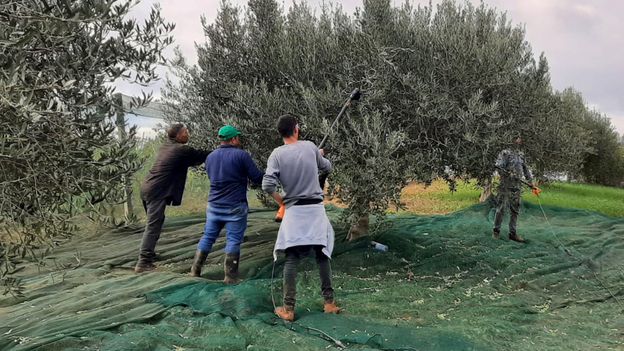Case in point: my in-laws’ Calabrian olives grow inland on a rocky plain, but six hours north in Terracina where my husband and I live, our friend’s trees grow in the mountains overlooking the Tyrrhenian Sea. One night after the harvest, we invite her to dinner, planning to swap our new EVOO. Our menu is Italian autumn on a plate: risotto alla zucca (pumpkin risotto) and roast chestnuts. Her oil – audaciously peppery and bright – is a stark contrast to our mild, floral offering.
More like this:
• Italy’s national parks are perfect for foodies
• Why luxury travellers are paying to work for their dinner
• The return of Sicily’s ancient ‘white gold’
“Our guests love learning how to recognise real EVOO,” says Lucia Leone, oil sommelier at Masseria il Frantoio in Ostuni, Puglia; a 16th-Century luxury farmhouse offering a variety of olive oil experiences. “Real EVOO is fruity, fresh, bitter and spicy. If you don’t taste those notes of tomato leaf, fresh-cut herbs or artichokes, the oil isn’t extra virgin.”
Monica Bisignano Zamler runs food and lifestyle tours in Italy, including a harvest experience where travellers can try their hand at collecting olives. “Tourists who’ve travelled to Italy before have seen the monuments; they’ve seen the Coliseum, they’ve been to Venice,” she says. “Now people are looking for more experiential travel in foreign countries; they’re really starting to recognise that it’s important to see how other cultures live and what their day-to-day lives are all about.”
An endangered tradition
La raccolta may be part of everyday life in rural Italy, but as Italians continue to migrate to larger cities for economic opportunities, hundreds of thousands of family groves have been abandoned in recent decades. Throughout urban Italy, industrialised mass olive oil production reigns; three in four bottles of olive oils purchased in Italy now come from overseas.
First Appeared on
Source link













